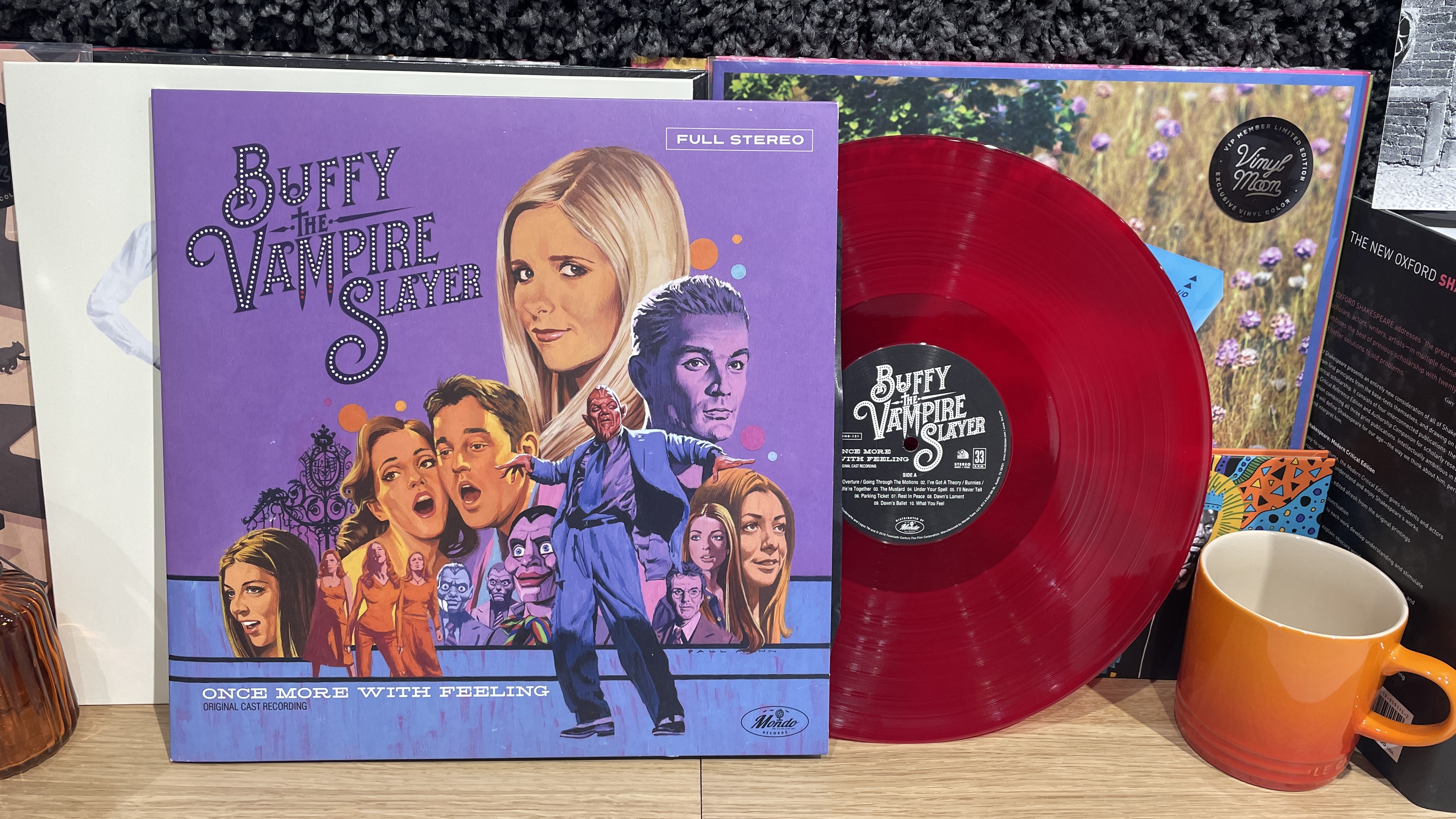Bowers & Wilkins Zeppelin (2021) vs Bowers & Wilkins Zeppelin Pro: what are the differences?
Do you stick with the original or go with the Pro?

Power 240W
Bluetooth Yes (5.0)
Mains-powered or battery-powered: Mains-powered
Battery life: N/A
Features: Tidal, Deezer, Qobuz, Amazon Music, Spotify Connect Music AirPlay 2, Amazon Alexa voice control
Connections: USB-C (service), aux in
Dimensions (hwd): 21 x 65 x 19.4cm
Weight 6.5kg
Finishes x 2 (Midnight Grey, Pearl Grey)
The original Zeppelin is a striking wireless speaker that blends an expansive, open presentation with looks to die for, even if it can't match the Pro Edition's superior sonic prowess.

Power 240W
Bluetooth Yes (5.0)
Mains-powered or battery-powered: Mains-powered
Battery life: N/A
Features: Tidal, Deezer, Qobuz, Amazon Music, Spotify Connect, AirPlay 2
Connections: USB-C (service)
Dimensions (hwd): 21 x 65 x 19.4cm
Weight 6.6kg
Finishes x 2 (Space Grey, Solar Gold)
With fewer features but significant upgrades sonically, the Pro Edition is built for music lovers who prioritise performance and wireless usability above all other things. Compared with the 2021 version, it's a clear step up.
Even if you don't know a huge amount about wireless speakers, chances are you'll be familiar with the large oval shape of Bowers & Wilkins' iconic Zeppelin line. Since first landing as a blimp-shaped dock for the iPod Classic in 2006, multiple changes and iterations have cemented the Zeppelin as one of B&W's most recognisable creations.
The Bowers & Wilkins Zeppelin (2021) further added to the line's legacy, and while we had concerns about a lack of fully comprehensive hi-res support, its four-star credentials won many fans. That version has now been joined by the Zeppelin Pro Edition, an upgraded spin on the design which strives for sonic gains thanks to a host of internal technical upgrades. With new tweeters taken from B&W's current 600 S3 Series of loudspeakers replacing the double dome aluminium units, enhanced cone-damping for the midrange drivers and high-performance bass units thrown into the mix, the Pro Edition aims to take a classic speaker to new sonic heights.
Price
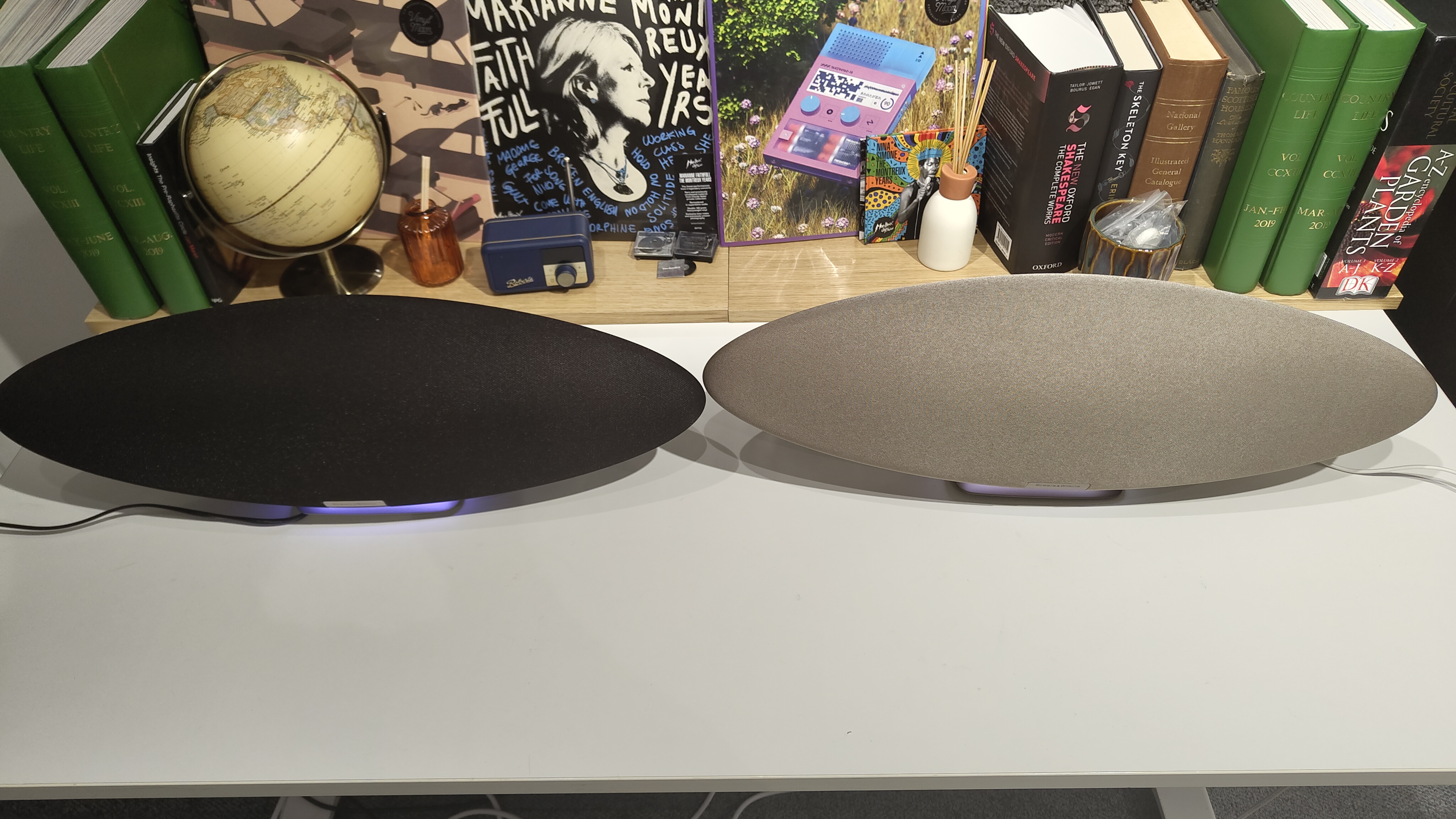
The 2021 Zeppelin officially retailed at £699 / $799 / AU$1199 when it launched, but the natural procession of time has seen prices drop to around £529 in the UK.
It's been gratifying to see the much newer Pro Edition arrive at that same initial price of £699 / $799, a decision that shouldn't be taken lightly considering that Bowers & Wilkins could easily have ramped up the cost for the newer, upgraded model. At this price point, the main external competition comes via the Award-winning Naim Mu-so Qb 2 which, at the time of writing, retails at £699 in the UK, $999 in the US and around AU$1800 in Australia.
Still, if you want the cheaper of the two Zeppelins, the 2021 edition is the one to pick.
*Winner: Bowers & Wilkins Zeppelin (2021)*
Build and design
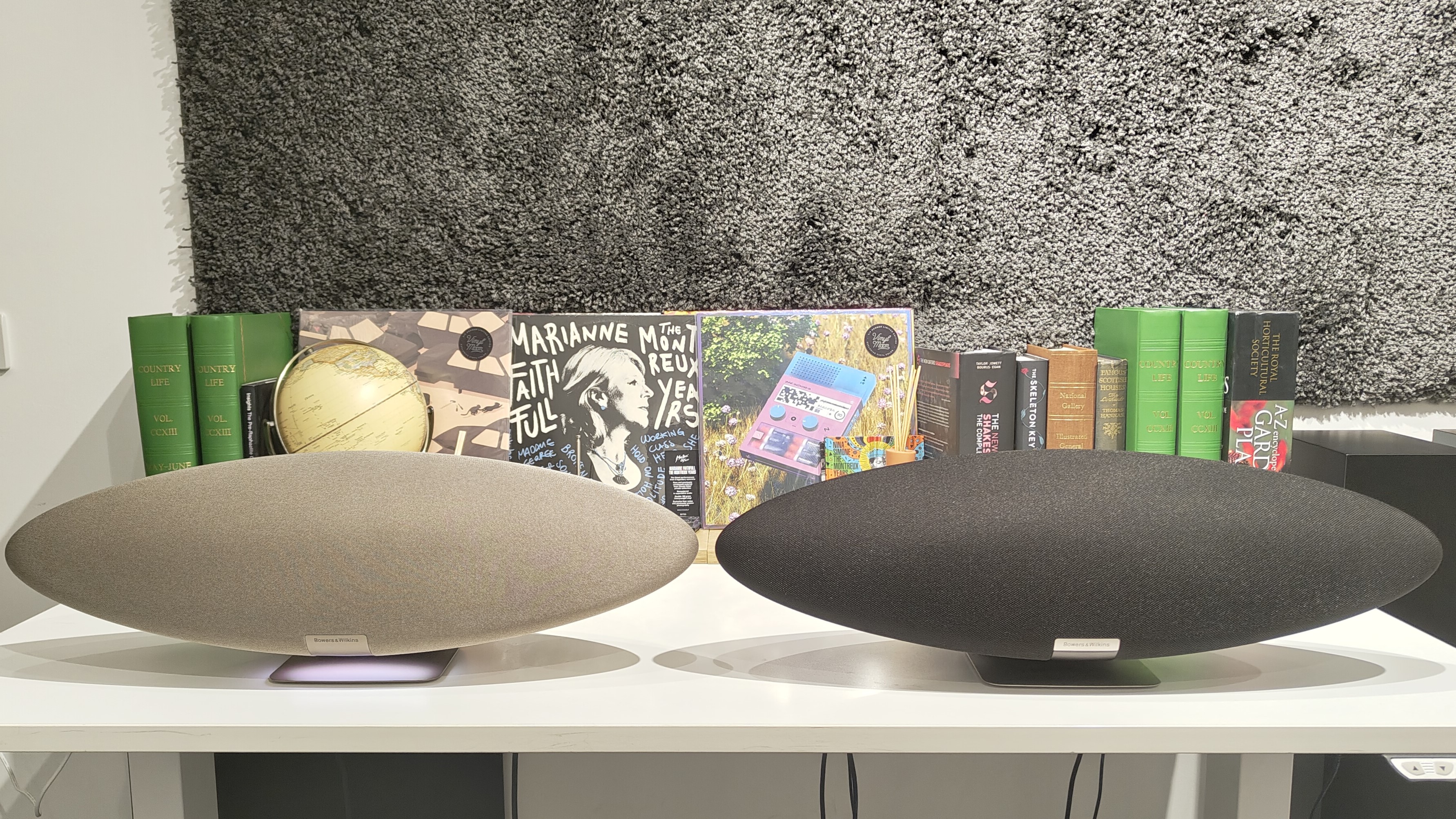
To the uninitiated, it can be tough to tell our competing Zeppelins apart, and while you may want a 'Pro Edition' of something to go out of its way to differentiate itself from its standard stablemate, how could you stray too far from that classic Zepp design? Whichever speaker you choose, you'll be treated to something beautifully made and, if it's to your tastes, utterly showstopping.
Both units sport a broad elliptical form which we've often compared to a blimp (naturally) or an oversized rugby ball, although a closer, top-down inspection will reveal that the Zeppelins use more of a wedge-shaped design wherein the top of the plastic casework slopes down to meet the horizontal base mounted on a metallic plinth. Both measure in at around 21 x 65 x 19cm (hwd), with a main fabric-clad grille angle slightly upwards and dominating the main unit's face.
Around the back of the Zeppelin (2021) and Pro Edition you'll find an array of physical buttons, though these do vary a little depending on which version you choose. Across the far edge of the 2021 Zeppelin you’ll find buttons for playback, a multi-function button and an Alexa toggle, all flanked by volume controls on either side of the array. It's broadly the same for the Pro Edition, but this time the Alexa button has gone as there's no voice control for the Pro, with a Bluetooth pairing button coming in to take its place.
While we understand the decision to place the buttons at each speaker's rear to preserve the aesthetic integrity of the front panel, they can be tricky to locate if the speaker is mounted above waist height or isn't itself easily accessible – leaning up and over the back of the unit does make a person worried they'd about to send their not-inexpensive new piece of audio gear crashing to the floor by accident.
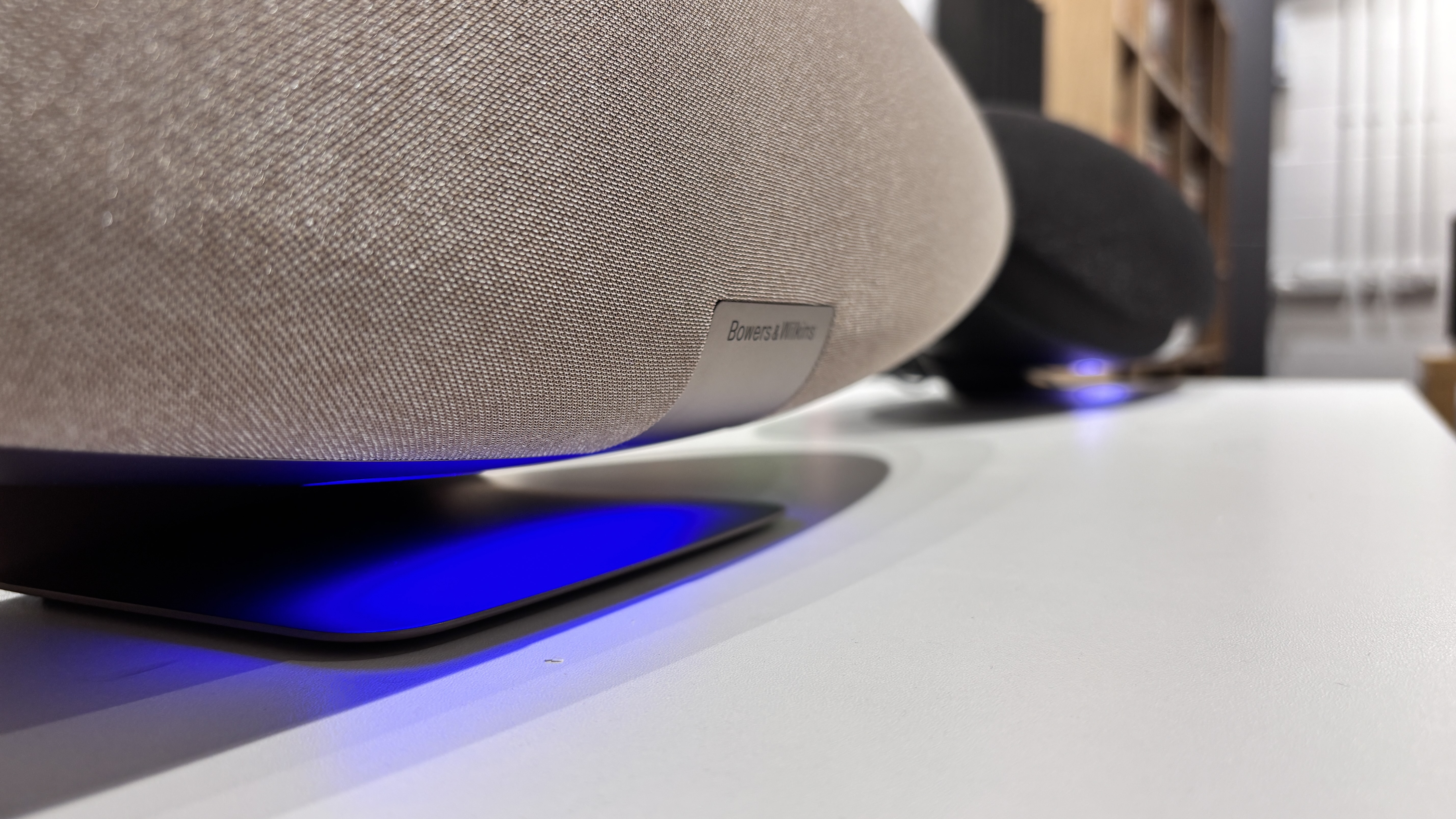
Want fancy under-speaker lighting to make your Zepellin (2021) or Zeppelin Pro Edition look as though it's hovering in mid-air? Of course you do! You can customise the colour and brightness of the underglow via the Bowers & Wilkins Music app for the Pro; just make sure you pick a shade that's in keeping with your speaker's overall aesthetic, as bright pink and pristine gold don't go too well together.
The only major aesthetic difference between the two speakers, minor button differences aside, is the choice of finishes. The original Zeppelin offers dark or light grey, whereas the Pro comes in either space grey or a rather swanky solar gold colourway. They're both built brilliantly, but the newer Pro looks and feels a little more luxurious when placed next to its standard counterpart.
*Winner: Bowers & Wilkins Zeppelin Pro Edition*
Features
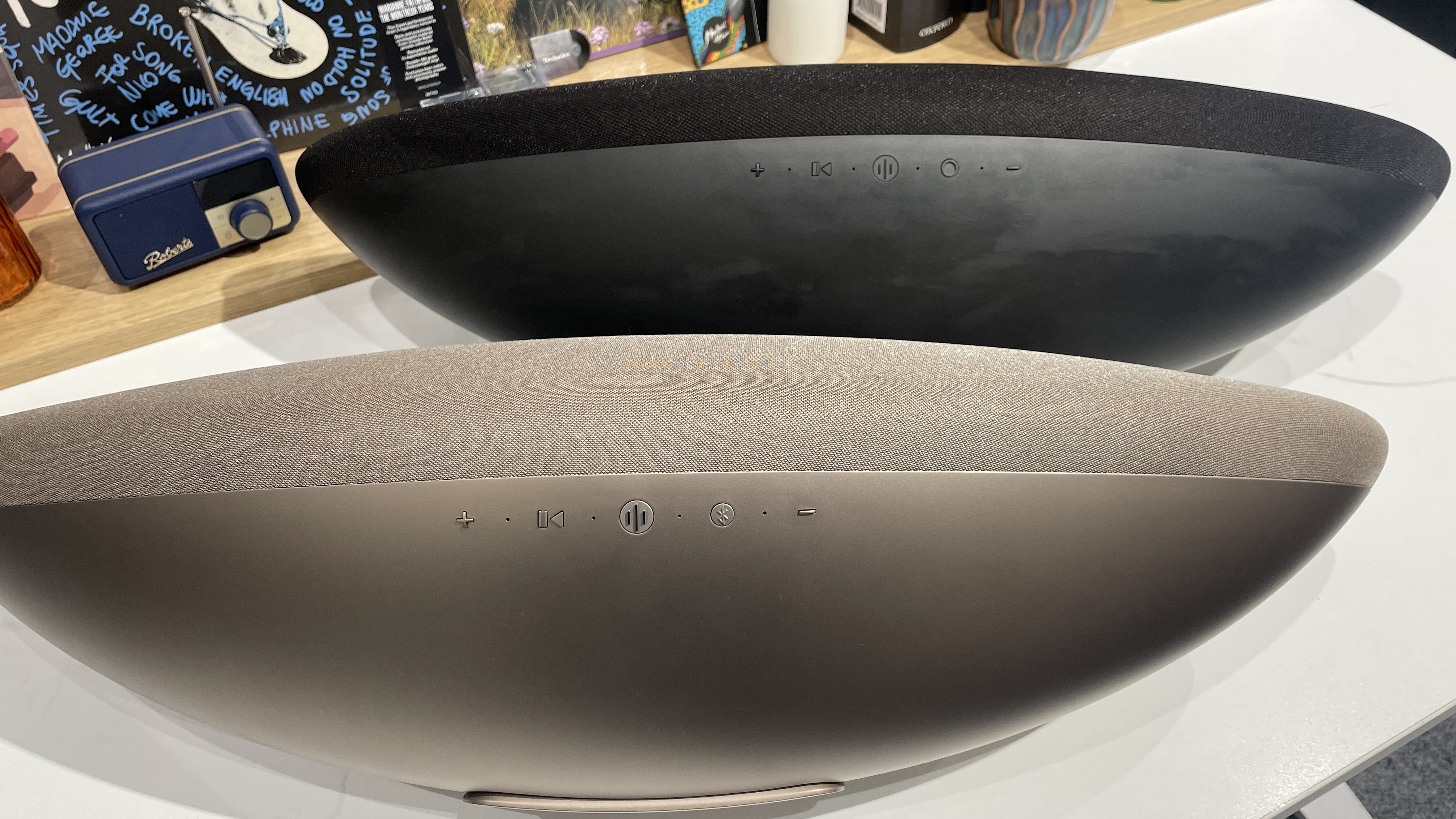
It may just be our experience, but we found that setting up the Zeppelin Pro Edition was a lot smoother than the process involved in bringing the 2021 model to life. The procedure is essentially the same, but we found that it was easier when setting up the more expensive model, possibly due to more recent updates to the B&W platform's software: fire up the Bowers app, add the speaker you want, select your chosen wi-fi network and there you have it, your Pro is ready to go.
Speaking of apps, the Bowers & Wilkins platform is a comprehensive and relatively intuitive place from which you can curate your experience, letting you link your chosen streaming services to the app for easy, all-in-one-place access. You can then save and curate various playlists, tracks and radio stations from across your favourite services no matter which speaker you choose. That said, we're keen to see B&W expand its on-board equaliser to something more in-depth than two bands.
The number of supported services is reasonably extensive for both models, even if that wasn't always the case with the standard Zeppelin at launch, with Deezer, Qobuz, Amazon Music, Spotify Connect and Tidal all supported on both. Notable exceptions include Chromecast and Tidal Connect, however.
If you want to hook up either Zeppelin via Bluetooth, you can do so via Bluetooth 5.0 with support for aptX Adaptive living alongside the standard AAC and SBC codecs. Don't expect any physical inputs, however, with both models only offering a power port and a USB-C connection for software updates.
Both speakers can be used as part of a multi-room system using the Bowers & Wilkins Music app which can include the company’s Formation range of wireless speakers, but do note that you can't pair two Zeppelins together via multiroom. You can also use AirPlay 2 to create a multi-room setup, but this will result in higher latency and lower-resolution audio. We had to wait for multi-room capabilities to arrive on the 2021 model via a post-launch update, but they come straight out of the box with the costlier Pro.
What we were surprised to find was the removal of voice control from B&W's Pro contender. The 2021 unit offered Alexa as standard, but Bowers & Wilkins claims that few users were particularly bothered by the inclusion of voice support and dropped it from the newer model. It's not a dealbreaker, but it's still a shame for anyone who wants to talk to their speaker and, more importantly, have it talk right back.
*Winner: Bowers & Wilkins Zeppelin (2021)*
Sound quality
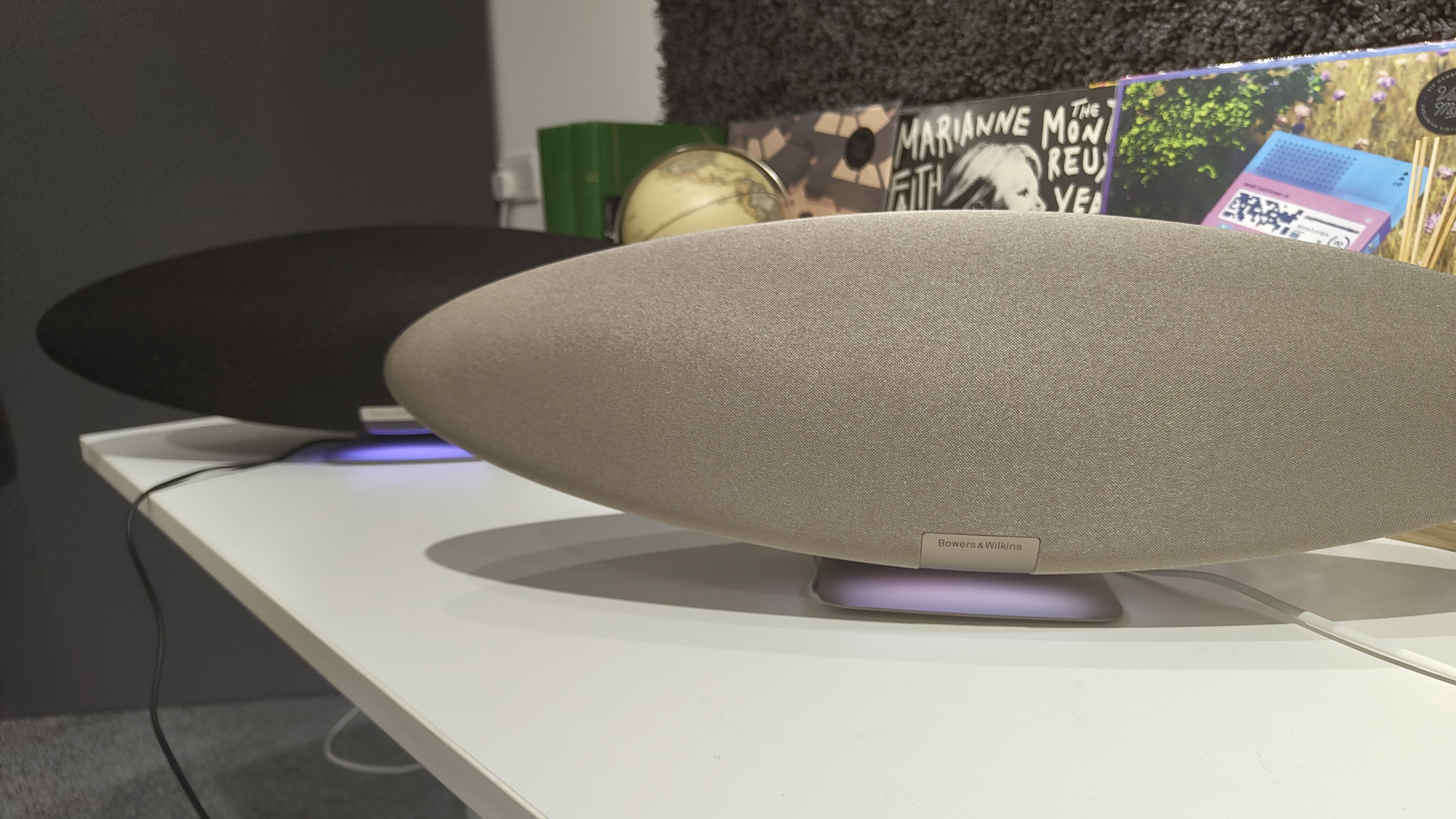
Most of the incentive for buying the Pro Edition of the Zeppelin comes from its upgraded sonic performance. To achieve this next step, Bowers has packed the Pro with a host of upgraded drive units, including the brand’s latest titanium dome tweeters (as seen in the Award-winning 607 S3 speakers), a set of 9cm midrange drivers with increased cone-damping and a 15cm subwoofer which promises “deep, detailed and refined bass” at the lower end. Like the 2021 version, the Pro Edition incorporates a 24-bit capable DAC, while the newer speaker's powerful digital signal processor promises "best-ever sound quality" from B&W's latest wireless wonder.
To our ears, the work has paid off. The Pro Edition adds generous helpings of clarity and textural detail to the equation, outperforming its 2021 counterpart with a sound that comes across as more authentic and natural as a result of those internal changes. The treble has a more pleasing, slightly rolled-off sweetness, whereas the bass sinks to powerful new depths without falling into that fatal trap of becoming a blobby, booming mess.
Across almost all of the key criteria, the Pro Edition excels. We'd like a touch more rhythmic spark and drive, but that minor bugbear aside, there are very few areas in which the speaker fails to deliver. To quote from our review: "There’s a real full-bodied robustness to the Pro Edition which goes beyond that which the original version is capable of, making tracks sound authoritative, imposing and anchored with serious weight in the lower end". There's breadth and scale to be enjoyed, too, and even when whacked up to the highest volumes, we were never concerned that the Pro was beginning to sound strained as it soared ever higher.
The 2021 is still a solid performer, but it's not in the same league as the Pro. Incorporating two of the 25mm 'Decoupled Double-Dome' aluminium tweeters as found in B&W's older 600 S2 Anniversary Series, as well as twin 9cm midrange units which also use the brand's Fixed Suspension Transducer (FST) technology, the 2021 Zeppelin delivers a pleasingly clear, full and broad presentation that shares much of the same character and charm as the more accomplished Pro Edition. It's beaten for rhythmic aptitude by similarly priced rivals such as the Naim Mu-so 2 Qb, but this is a powerful, room-filling performer that blends room-filling sound with a reassuring sense of authority and cohesion, all while excelling at higher volumes.
The main reason for buying the Pro Edition is its clear gains in sonic performance. Had Bowers failed to extract those extra yards, its new addition to the Zeppelin line would have been all but redundant – thankfully, it's a clear step up from 2021's effort thanks to those upgraded drive units.
*Winner: Bowers & Wilkins Zeppelin Pro Edition*
Verdict
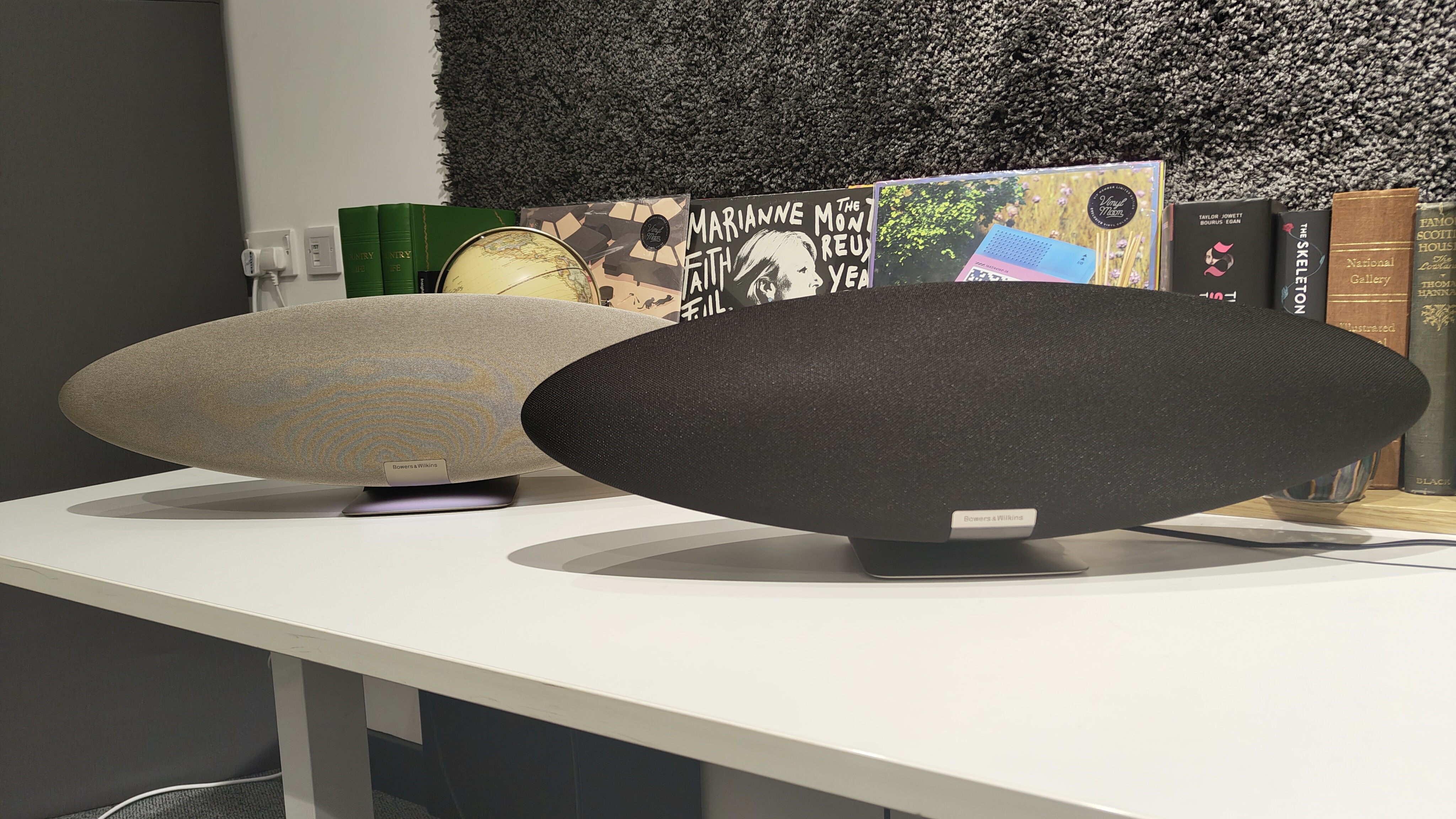
The Bowers & Wilkins Zeppelin (2021) hasn't been made completely redundant by the arrival of a newer model. It still sounds acceptable for the ever-lowering price that you'll pay, all while offering a few key features, such as Alexa voice control, that never made their way to the Pro Edition.
If sound is king, you don't crave the addition of any physical connections and you don't consider the loss of Alexa any great tragedy, the Pro Edition is the way to go. Bowers' updated drive units working alongside its digital signal processing tech and a 24-bit capable DAC have paid sonic dividends, leading to a speaker that sounds clearer, more articulate and more engaging than its older counterpart. As a gorgeous blend of design and performance, the Pro Edition takes the Zeppelin line to stunning new heights.
MORE:
These are the best wireless speakers we've tested
And these are the best smart speakers for voice control
Treat your hi-fi system to these 11 incredible albums celebrating their 30th birthday this year
Get the What Hi-Fi? Newsletter
The latest hi-fi, home cinema and tech news, reviews, buying advice and deals, direct to your inbox.

Harry McKerrell is a senior staff writer at What Hi-Fi?. During his time at the publication, he has written countless news stories alongside features, advice and reviews of products ranging from floorstanding speakers and music streamers to over-ear headphones, wireless earbuds and portable DACs. He has covered launches from hi-fi and consumer tech brands, and major industry events including IFA, High End Munich and, of course, the Bristol Hi-Fi Show. When not at work he can be found playing hockey, practising the piano or trying to pet strangers' dogs.
